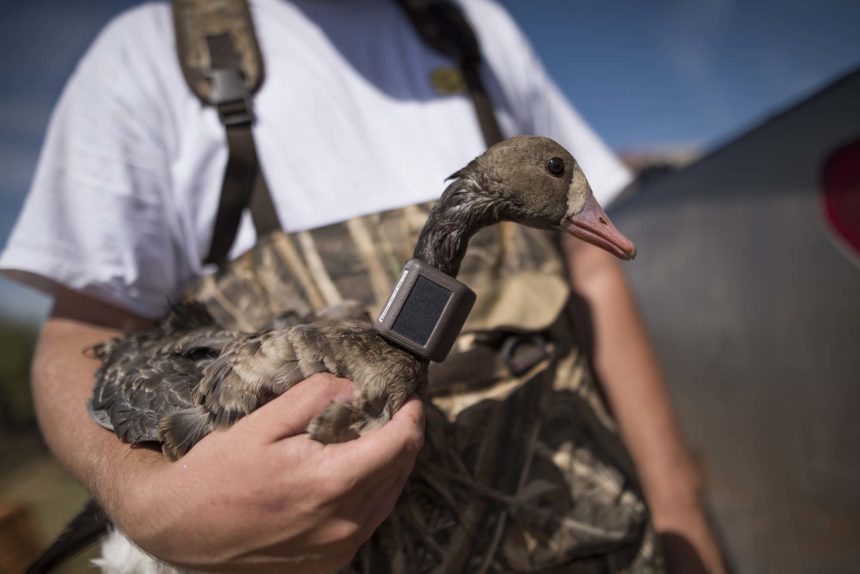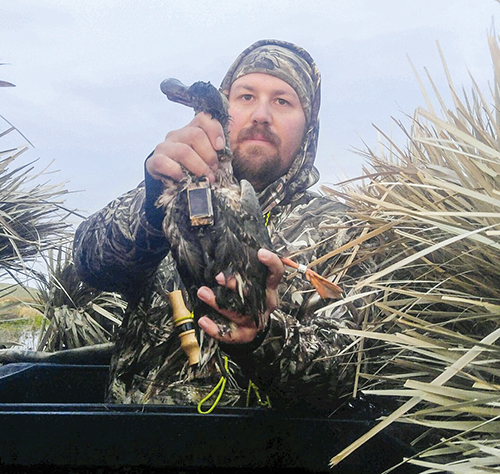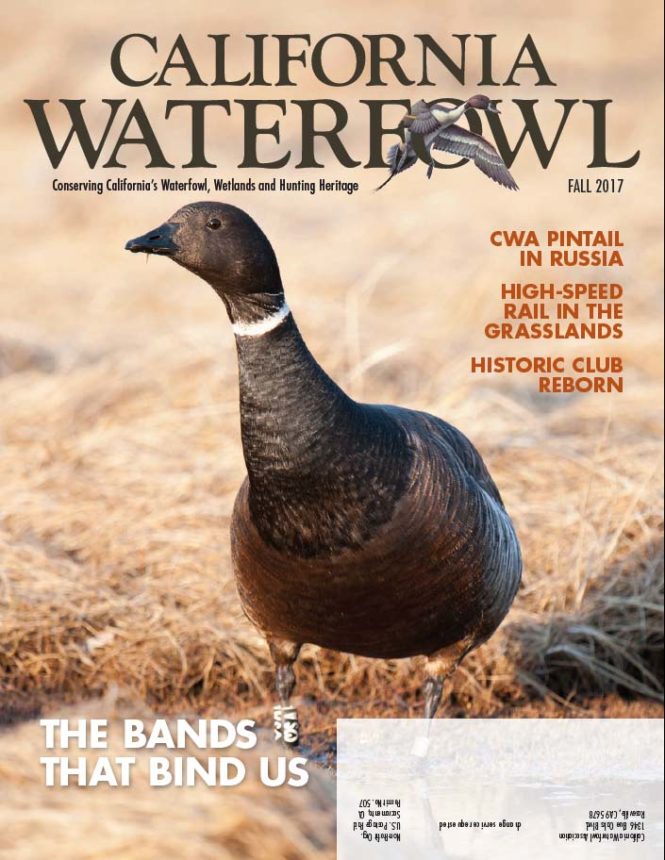Have you gotten a bird with more than an ordinary aluminum band? Here's what it might be.
GPS transmitters

Read about CWA's efforts to put solar-powered GPS collars on white-fronted geese here.
The U.S. Geological Survey is doing some of the most exciting research in waterfowl these days using state-of-the-art technology: solar powered GPS transmitter backpacks for ducks and collars for geese that use cellular networks to relay their locations to researchers every 30 minutes, provided they're in range of a cell tower. Click here to read an article about the research.
If you shoot a bird with a transmitter, you are not in trouble. However, those little backpacks cost about $2,000 apiece, so the researchers would very much appreciate it if you'd call the number on the backpack and arrange to return it. They'll send you a non-functioning backpack (in case you plan to mount the bird and want a transmitter attached), as well as a map of where the bird has been since it was fitted with the backpack.

Hunter Russell Raley bagged a northern shoveler with some unusual apparatus attached during a hunt at CWA's Denverton facility.
Plastic leg bands and neck collars

Bands always tell us a story about the birds that bear them. In this case, a band told a story about the banders as well. Click here to read the story (PDF).
It's not uncommon for geese to be fitted with plastic leg bands or neck collars in addition to the standard aluminum leg band.
Plastic bands and collars usually have only a couple of characters on them, and the characters are large enough to be read on a live bird with binoculars or a spotting scope. That means researchers don't have to wait for a bird to be shot — the way the vast majority of banded birds are reported — to get data.
Click here to read a remarkable story about one particular banded brant.


